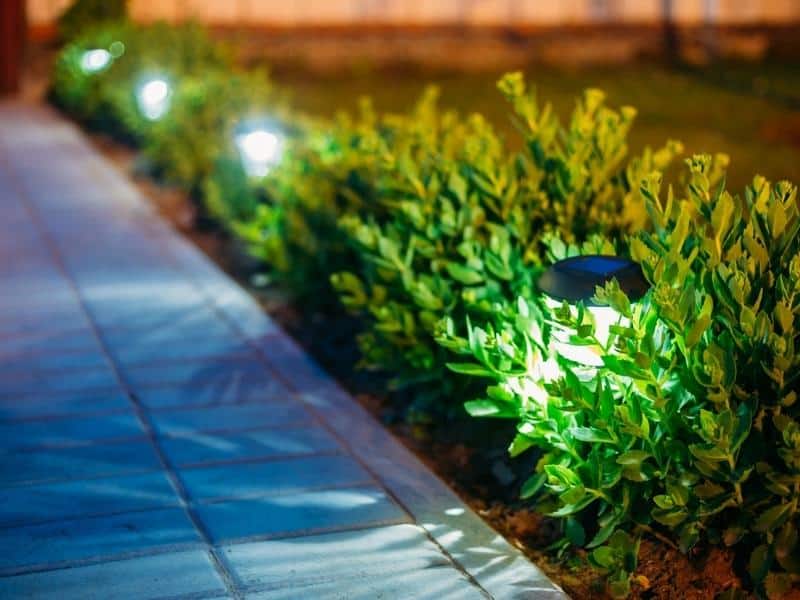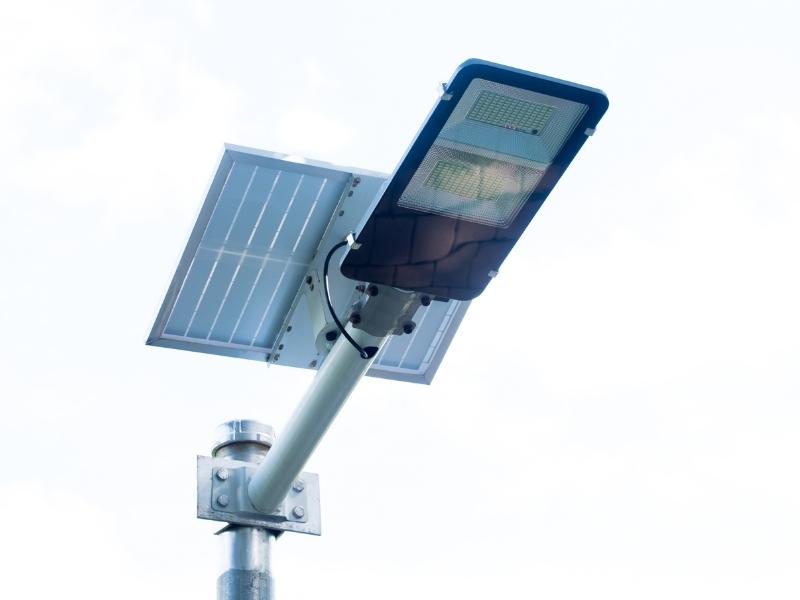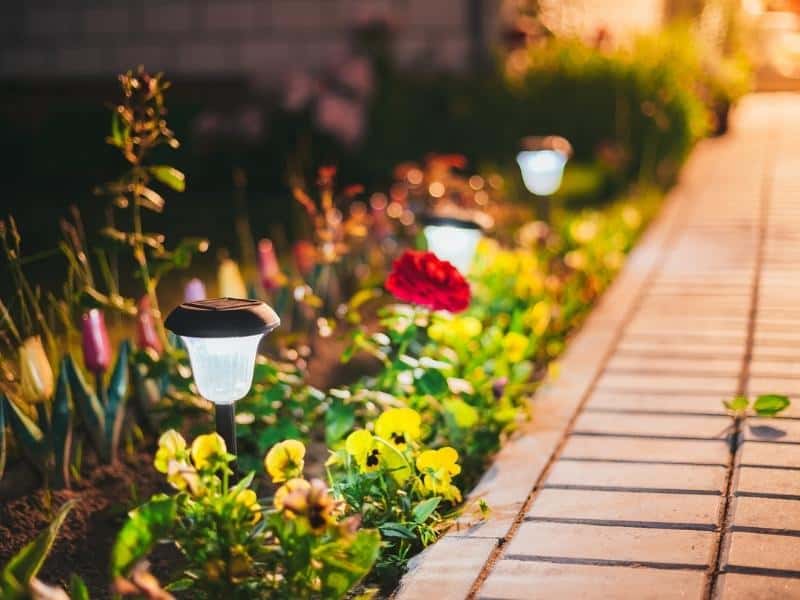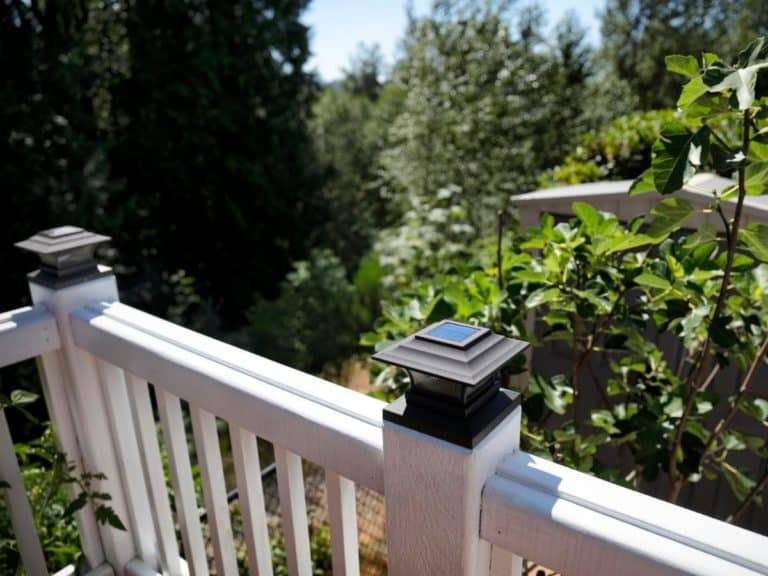With renewable energy on everyone’s minds and as a topic of many conversations, it’s only natural for people to grow curious about what solar can do for them.
While many people have embraced solar, some are still new to solar-powered devices, especially solar lighting. Below are frequently asked questions about solar lights.
Here are a few things we’ll be looking at today;
- Different types of solar lights
- How they work
- How long they last
- How to maintain them
The following information will help you enjoy your solar lights for longer than normal, let’s get started!

What Is A Solar Light?
Solar lights are the same as your normal light. Except they don’t draw power from electricity to function, they use the sun’s light. Solar lights have photovoltaic batteries that are charged each day to provide light.
The solar cells convert sunlight into electricity and are made from crystalline silicon layers containing positive and negatively charged electrons.
The sunlight then powers the electrons when it enters the solar cell and pushes them where the positive charge is.
While not all towns and cities have them, you might notice something on your streetlight if you’ve paid attention to your streetlights as you’ve walked, biked, or driven around town.
This solar collector collects sunlight and automatically turns on the light when it detects darkness.
Cities with solar-powered streetlights include Kampala, Uganda, Beaumont, California, Highland Park, Michigan, Jinja City, Uganda, Belleair Beach, Florida; and others.

Types Of Solar Lights
There are several types of solar lights available. These include solar lanterns, solar spotlights, solar streetlights, and solar pathway lighting. Below are a few examples of solar lights.
See also: Solar Panel Lights (How They Work Best)
Hybrid Solar Lights
Hybrid solar lights are a little more complex, and several systems function differently. One system that powers a grid will function differently than one that powers lighting or both.
There are also grid-tied and off-grid systems as well.
Solar Sky Lights
Solar skylights save a great amount of energy you would otherwise spend on electricity. Solar skylights are easier to maintain than solar panels, and they are smaller.
They have a rain sensor built-in, which closes the skylight when it senses rain.
Solar Flood Lights
Floodlights are blindingly bright, making it a surprise that solar power is viable for floodlights. Just like any other solar-powered light, there are solar cells to harness sunlight to produce energy and a battery to store the energy.
Solar flood lights on motion detectors last a long time, but the battery is what you have to worry about the most.
Even the rechargeable batteries have a certain number of charges they can go through before performance decreases.
Solar Pathway Lighting
Solar lights for an outdoor path are an excellent option for homeowners and businesses.
Not only are they easy to install and cost-efficient, but they are far brighter than pathway lights that rely on traditional wired options to provide lighting.

How Long Do Solar Lights Take To Charge?
Solar devices typically need between four to twelve hours to charge fully. They need direct sun exposure every day, which means they charge well when not under trees, shady areas, or under a roof overhang.
Dirty solar lights will also take longer to charge, and it’s also advisable not to place them near another lighted object.
Do Solar Power Lights Need To Be Turned On To Charge?
Solar lights are easy to operate, especially with an on/off switch. If your device does have an on/off switch, you need to switch it to the on position while in use.
If you are storing or trying to preserve the battery life, you can turn your solar light off.
Will Solar Lights Charge On A Cloudy Day?
Many people, especially those living in cloudy, rainy climates, wonder if it is feasible to use solar power. The good news is that solar lights and other solar devices can charge even if it’s cloudy.
This is due to the sensitivity of the receptors, which means if the sun is up, your device can charge, even though it may take longer.
Why Are My Solar Lights Flashing?
Flashing solar lights indicate that there’s a chance that your lights aren’t receiving enough sunlight to produce a charge.
It also indicates that your batteries are old and can’t hold a charge or that your solar light is dirty and needs cleaning.
What Does A, B, and C Mean On Solar Lights?
If you have a solar light with a switch with A, B, or C indications, you’re likely curious about what it means if you’re not one to consult an owner’s manual.
- The A indication means that the solar light will provide a bright light that’s always on in the dark until the battery is dead.
- If you choose B, there will be a constant dimmed light until it detects motion. It will go to full illumination for 15 seconds when it detects motion.
- If you choose C, the solar light will remain off until it detects motion, after which it will go to full illumination for 15 seconds.

Can You Use Regular Batteries for Solar Lights?
You can use regular batteries to solar power lights for short periods, but you shouldn’t leave them there for more than a week.
But, it’s best not to use regular batteries because they are alkaline based and designed to be thrown away after they run out of power.
If you use standard batteries, something could cause you to forget to take them out at the end of the week, so they’re not worth the risk.
How Do You Install Solar Lights?
When installing your solar lights, it’s important to read the manual first while identifying what you will need, if anything, and what features your solar lights have.
Once you’ve read the instructions, find a sunny place where you wish to put your solar lights and mark the spot. The last step is to install your lights in the areas you choose.
How Far Apart Should You Place Solar Lights?
The general rule states that solar lights should be placed between six to eight feet apart for residential use.
Before you go out and purchase a large number of solar lights, measure the space you wish to illuminate and mark the spots.
Can You Leave Solar Lights Out In The Winter?
You can only leave your solar lights outside in the winter if they are rated as outside lighting; otherwise, it will affect the performance of the light.
The batteries within the solar light work better the closer to room temperature.
How To Clean Your Solar Lights
We’ve mentioned above that keeping your solar lights clean is important. This is because dust and other debris on the solar cells impact the ability of the battery to charge.
When your solar lights don’t charge as well, your outdoor lights won’t stay on very long, and it will shorten the life of your battery.
When cleaning your solar lights, it’s best to use a soft cloth and a little soapy water.
You will need a brush with soft bristles if you have any mud or other debris. For maximum performance, clean your solar cells once per month.



